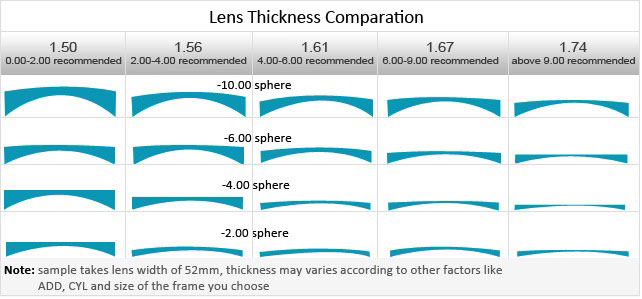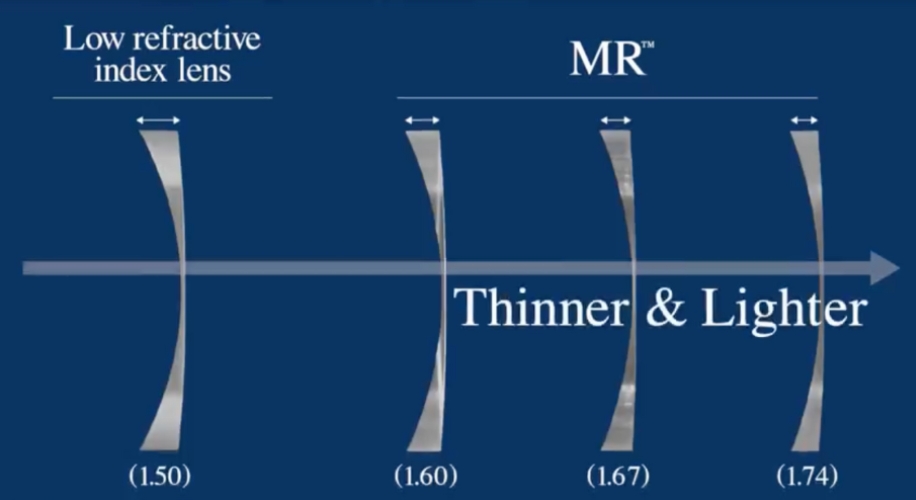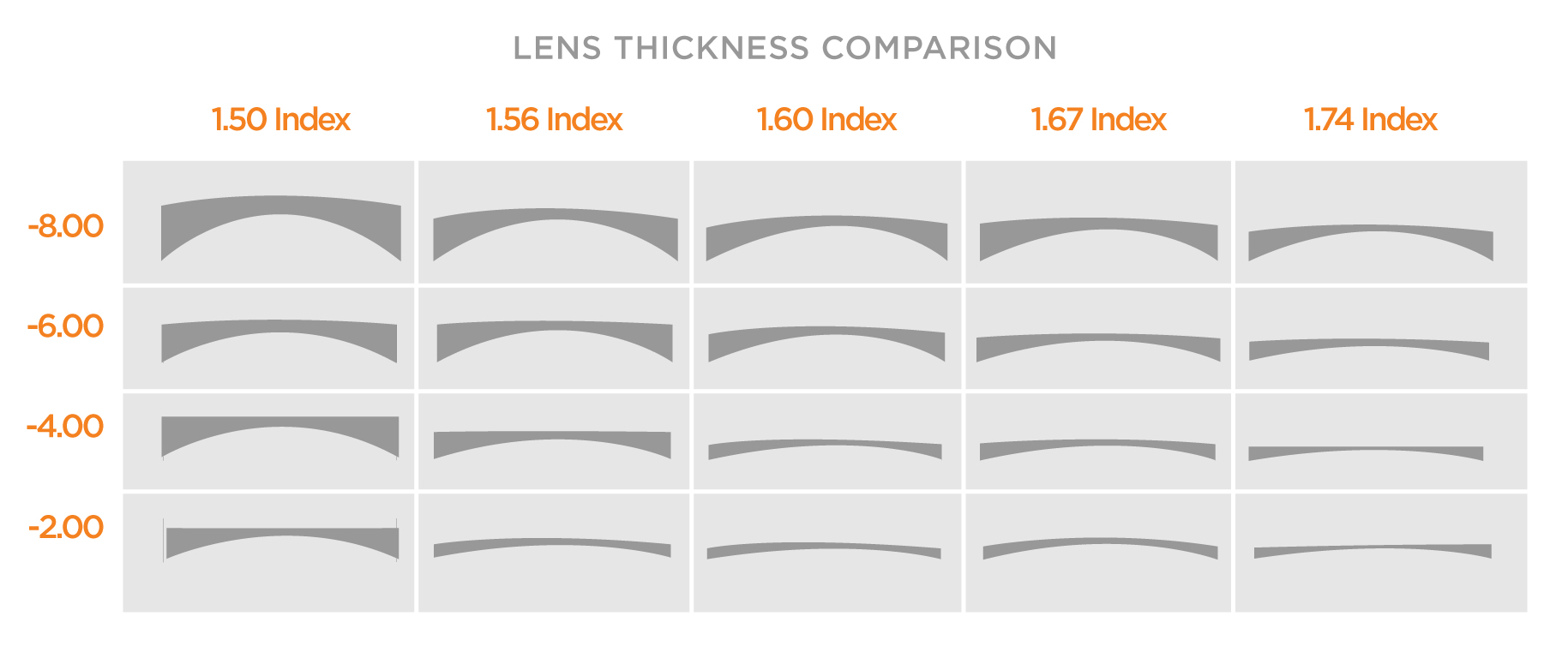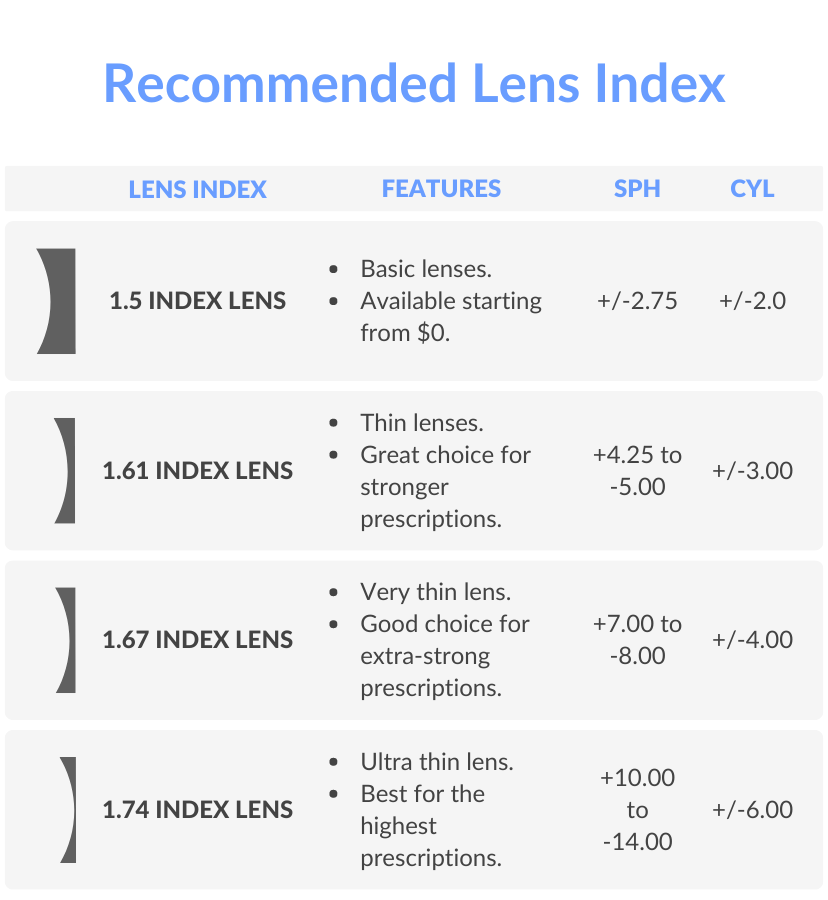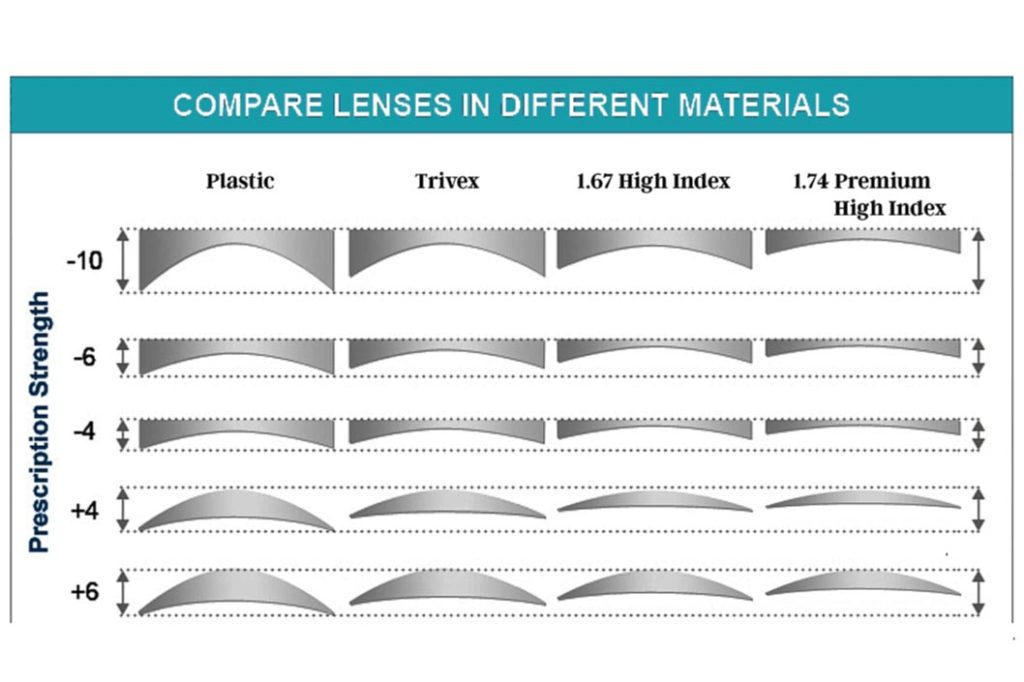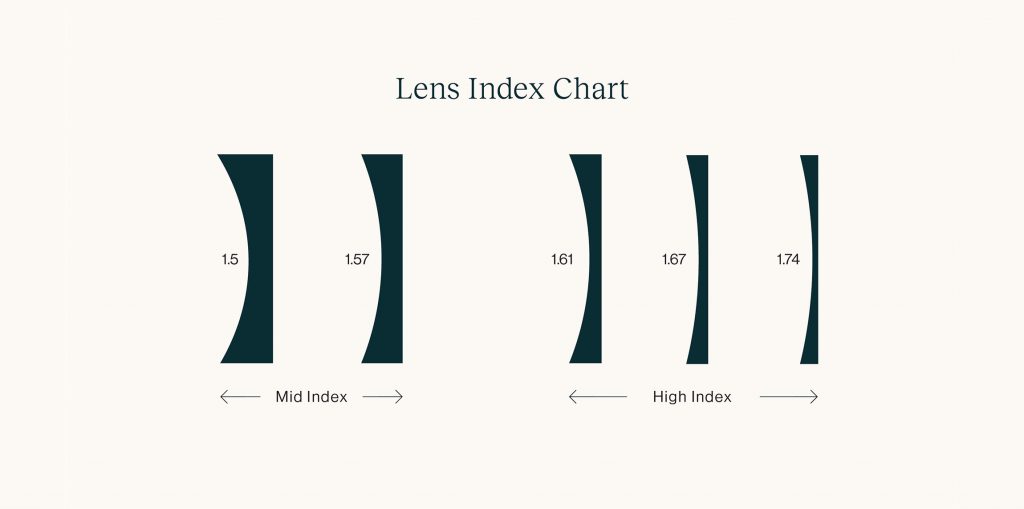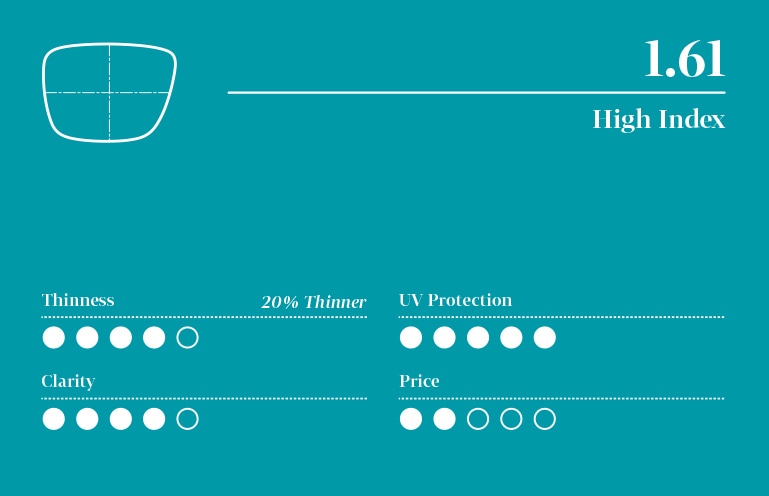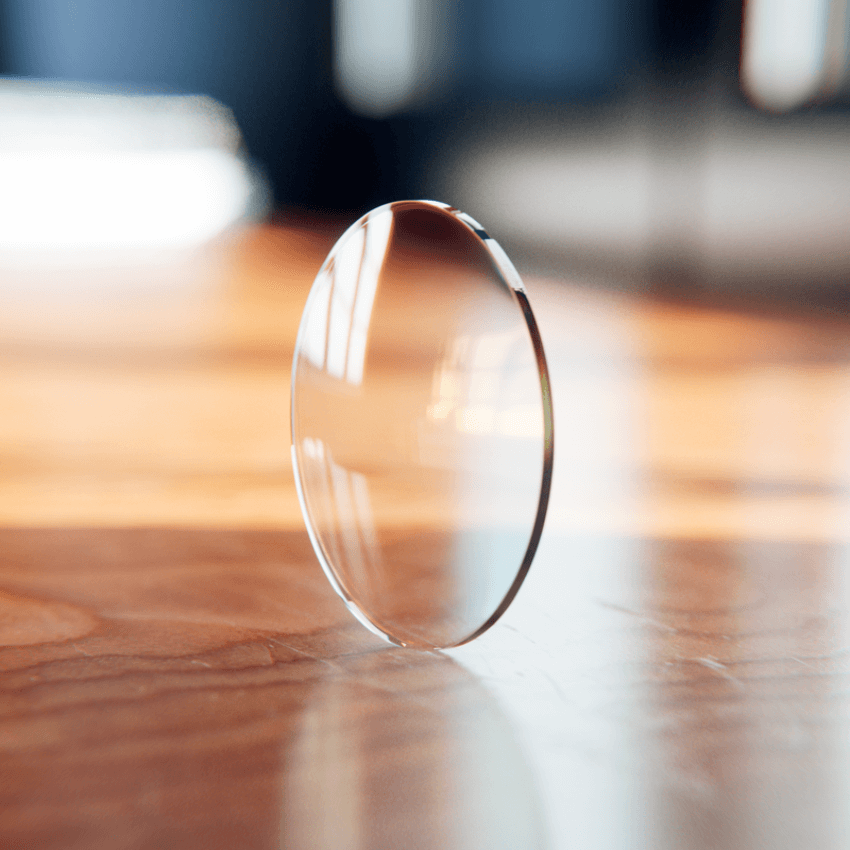Difference Between 1.61 And 1.67 High Index Lenses
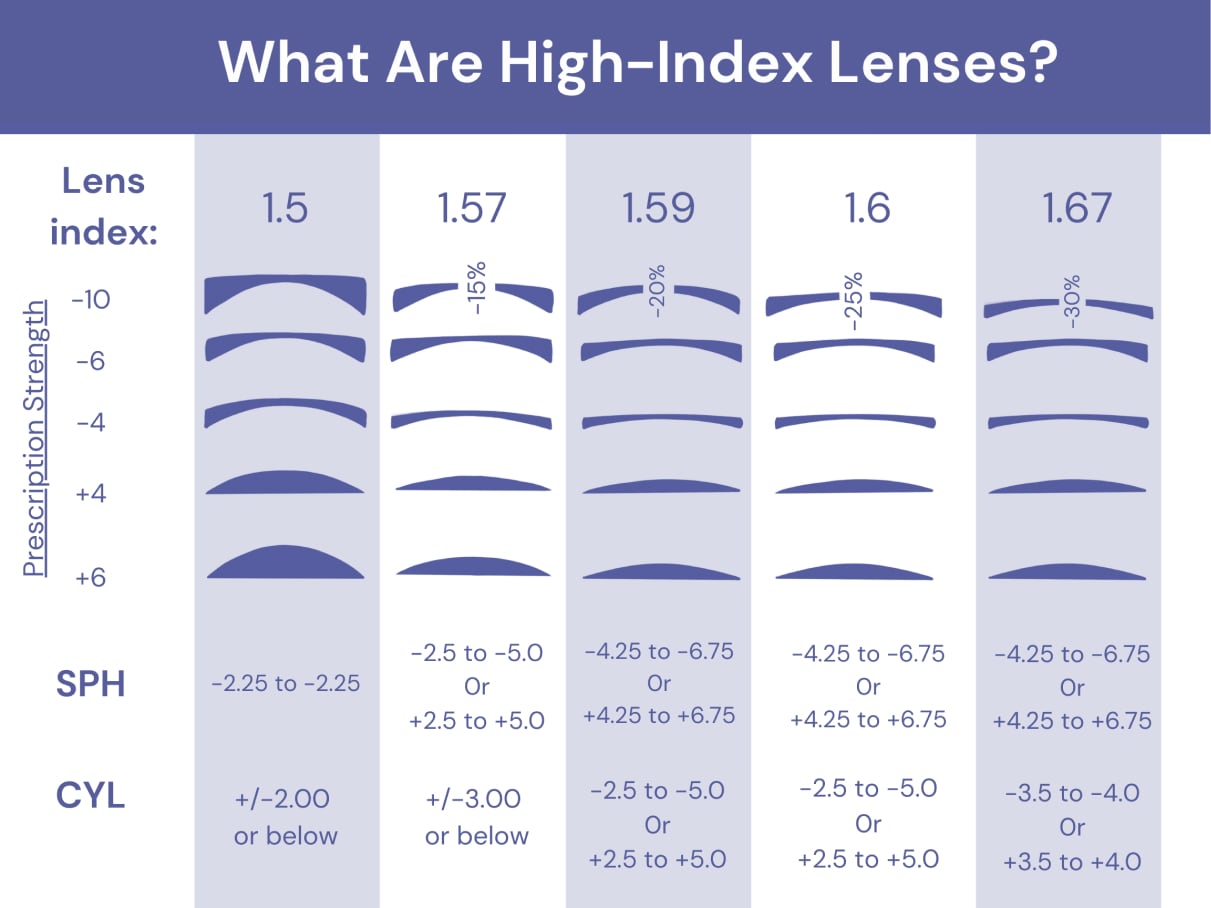
The world of vision correction can be a confusing landscape, filled with numbers and technical jargon. For those requiring corrective lenses, the choice between a 1.61 and 1.67 high-index lens might seem insignificant, yet this seemingly small difference can have a profound impact on the aesthetics, comfort, and overall visual experience.
This article delves into the nuanced differences between these two popular lens options, providing a comprehensive comparison to help consumers and eye care professionals make informed decisions. We'll explore the factors that separate them, including thickness, weight, optical performance, and cost, drawing upon industry expertise and scientific principles to clarify the advantages and disadvantages of each.
Understanding High-Index Lenses
High-index lenses are designed to bend light more efficiently than standard plastic lenses. This allows for thinner and lighter lenses, especially beneficial for individuals with strong prescriptions. The higher the index number, the more the lens bends light, resulting in a thinner lens for the same corrective power.
Both 1.61 and 1.67 lenses fall into the high-index category, offering significant improvements over traditional plastic lenses. However, their subtle distinctions can make a noticeable difference in the final product.
Thickness and Weight Comparison
The primary advantage of a 1.67 lens over a 1.61 lens is its superior thinness. With a higher refractive index, the 1.67 lens bends light even more efficiently, allowing for a noticeably thinner profile, particularly in stronger prescriptions. This difference in thickness translates directly to a lighter lens, improving overall comfort for the wearer.
For individuals with very high prescriptions, the 1.67 lens can be a game-changer. The reduced thickness and weight can alleviate pressure on the nose and temples, leading to a more comfortable and aesthetically pleasing wearing experience. Dr. Emily Carter, an optometrist at VisionFirst Clinic, notes, "Patients with prescriptions above +/- 4.00 diopters often greatly benefit from the increased thinness of the 1.67 index."
Optical Performance
While thinness and weight are key considerations, optical performance is paramount. Both 1.61 and 1.67 lenses generally offer excellent optical clarity.
However, some argue that higher index lenses can sometimes exhibit slightly more chromatic aberration, a phenomenon where different colors of light are focused at different points, potentially leading to subtle color fringing. "The difference is often imperceptible to most wearers," assures Dr. Carter. Modern lens manufacturing techniques and advanced coatings help to minimize this effect in both 1.61 and 1.67 lenses.
Cost Considerations
As with most things, increased performance often comes at a higher price. 1.67 high-index lenses are typically more expensive than 1.61 lenses. The increased cost reflects the more advanced materials and manufacturing processes required to achieve the higher refractive index.
Consumers should weigh the benefits of increased thinness and weight reduction against the added expense. For individuals with lower prescriptions, the cost difference might not justify the marginal improvement in lens thickness.
Material and Durability
Both 1.61 and 1.67 lenses are typically made from plastic materials. The specific materials used can vary, influencing factors like scratch resistance and impact resistance. Choosing lenses with appropriate coatings, such as anti-scratch and anti-reflective coatings, is essential to enhance durability and visual clarity for both types of lenses.
According to the Optical Retailers Association, "Selecting a durable lens material and investing in protective coatings are crucial to extending the lifespan of any lens, regardless of its index."
Choosing the Right Lens: A Personalized Approach
Ultimately, the best choice between 1.61 and 1.67 high-index lenses depends on individual needs and preferences. Factors such as prescription strength, budget, lifestyle, and aesthetic considerations should all be taken into account.
Consulting with an eye care professional is crucial. They can assess your specific needs and recommend the most appropriate lens option based on your individual circumstances. "We always recommend a thorough discussion with our patients to understand their visual needs and lifestyle before making a lens recommendation," says Dr. Carter.
The Future of High-Index Lenses
The field of lens technology is constantly evolving. Researchers are continuously developing new materials and manufacturing techniques to improve lens performance, durability, and aesthetics. Expect to see even thinner and lighter high-index lenses in the future, along with advancements in coatings and optical design.
Ongoing research focuses on minimizing chromatic aberration and enhancing impact resistance in high-index lenses. These advancements promise to further improve the visual experience for individuals requiring corrective lenses.
As technology advances, the lines between different lens indexes may blur, offering consumers even more options tailored to their individual needs. Staying informed and consulting with eye care professionals will be key to navigating the ever-changing landscape of vision correction.

